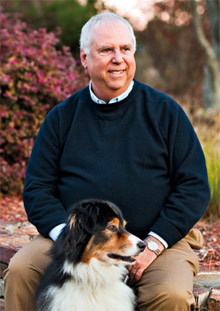With every turn of the page or scroll through a Reader feed, someone, somewhere, is giving advice on what leaders ought to be. Consider this recent post from passionate teacher Megan Allen who describes for us the qualities she feels “amazing” administrators possess. Or Erin Paytner’s recent post, 29 Things I’ve Learned as an Administrator…So far… I found many of those lessons to ring true for me, now in my fourth year as principal, as did Jeff Delp’s post regarding productivity, priorities, and the challenges school leaders face.
So the articles, blog posts, and books on leadership will keep on coming, because the role of leadership is ever-evolving and increasingly complex with each passing day. (And with each passing mandate.) I enjoy reading the work of leaders in fields outside of education, too. While not every lesson can be translated to the work we do with students, many can, and we should consider them. In a recent issue of Entrepreneur magazine, a piece entitled Leadership Lessons from the Top of the Org Chart by Christopher Hann highlights the successes of leaders who’ve managed to stay at the head of their games, and the philosophies they live by to do so.
Consider Mark Leslie, the CEO of Veritas. One of his top priorities is transparency — making sure that everyone in the organization knows as much information as he does, to squash secrecy and avoid uneven shifts in power. He stresses the importance of trust.
“I believe if you want to be trusted, you have to trust first,” he says. “If you do that, you will be betrayed sometimes. But the value of engendering trust is greater than the cost of being betrayed sometimes. People believed we were going to tell them the truth, be straight, honest, and didn’t think we were going to screw them.”
Further, Leslie makes developing a strong working environment a priority.
“It’s not about command and control. You attract the best and the brightest people and create an environment where they can use their intelligence and judgment to act autonomously.”
Good school leadership: highly apparent & intoxicating
For all of us charged with leading organizations of learning, we know that successful schools are built around a strong, shared culture and community. Clint Smith, the CEO of a marketing firm in Tennessee, offered ideas for how to develop and sustain the often illusive, but always desired, workplace culture. He began by examining the physical environment and ensuring his workplace was one where employees could be productive and feel happy in their work. William Smith, founder of IT company Euclid Elements, highlighted the need for leaders to develop awareness of their own strengths and weaknesses. This requires continual self-examination from individuals as well as the team as a whole.
“We want to get better at designing and developing products. That requires a real self-awareness as a team, and that’s an extremely important part of the culture we want to create — being aware of what we do well and what we don’t do so well.”
The Educon conference in Philadelphia is hosted annually at the Science Leadership Academy. One of my takeaways each year is the way in which principal Chris Lehmann has built a shared culture for learning with all teachers, students, and the community. It is both highly apparent and intoxicating. Bringing the best team on board is an important part of a leader’s role — how the team is managed is equally as important. Mark Leslie agrees.
“You have to get great people to come in,” Leslie says. “You have to respect them, give them freedom. You have to provide the mission and the vision: Who are we and where are we going?”
Other leaders featured in the Entrepreneur article stressed the importance of:
– having fun with your teams;
– weeding out employees who don’t want to be team players or don’t treat colleagues with respect;
– empowering and allowing team members to shine and reap the rewards of their hard work; and
– building an organization that is sustainable over time.
With all of these philosophies and strategies in mind, consider this teaser quote featured in the center of the article:
Creating a system that enables employees to achieve great things often comes down to the work of a single leader.
No pressure, eh?
Connected colleagues for the journey
Leslie’s closing words touch upon the realities of leadership, which can be isolating and solitary.
“It’s an old cliche: It’s lonely at the top. It truly is. There’s no one to talk to. It’s a journey of discovery, a journey alone. And you actually have to be comfortable enough with yourself to do that.”
For school leaders such as those I’ve come to know through Connected Principals and other groups in my PLN, I think we have an advantage. While we do embark on many solitary journeys each and every day, we also know we have a strong foundation of colleagues and experienced voices to support us along the path. That’s what it means to be a connected leader.
Lyn Hilt also writes at her personal blog, The Principal’s Posts, where this reflection first appeared.
1st photo: CC license woodleywonderworks
2nd photo: Entrepreneur
Lyn Hilt
Latest posts by Lyn Hilt (see all)
- User-Generated Learning: A Must-Do for School Leaders Today - January 15, 2013
- Lessons in 21st Century Leadership - April 27, 2012
- What Do We Need Our Teachers to Be? - March 2, 2012




Lyn,
I enjoyed reading your article. I am a former elementary education teacher and now work for an education technology company. PLEASE don’t think this is a sales pitch because I am as far from a sales person as one can get. We have recently launched a collaborative learning platform that, in my opinion, lends itself nicely to 21st Century classrooms. If you would like to see what it’s about- you can visit http://www.schoolwires.com/nimbus. Again- I’m not trying to sell anything, just thought you might be interested in checking it out. Have a nice day.
An entrepreneur is an economic agent who unites all means of production- land of one, the labour of another and the capital of yet another and thus produces a product. By selling the product in the market he pays rent of land, wages to labour, interest on capital and what remains is his profit. He shifts economic resources out of an area of lower and into an area of higher productivity and greater yield.:’
Kind thoughts
<http://www.foodsupplementcenter.com